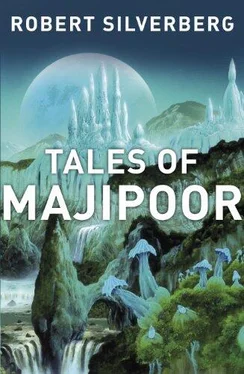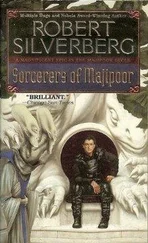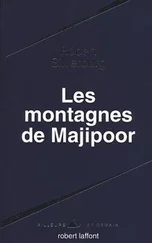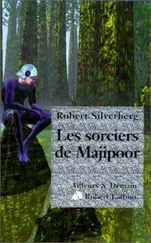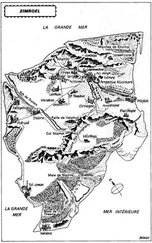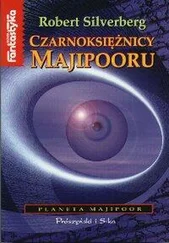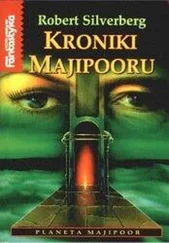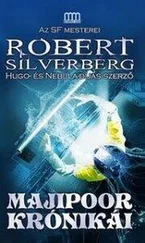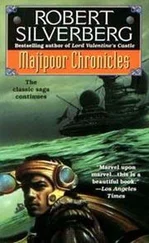Tales of Majipoor
by Robert Silverberg
FOR WOJTEK
Who thought of this book before I did
They came from Old Earth. They found an enormous planet, a gigantic world which, huge as it was, was suitable for human settlement because of its low gravitational pull. Life abounded there, life of all sorts, including a sparse population of aboriginal humanoids, mysterious shapeshifting forest-dwellers. To the settlers from Old Earth, those natives—the Piurivars, they called themselves, but the Earthmen called them Shapeshifters or Metamorphs—did not seem important. Surely there was room among them on this vast planet for colonists from another world.
And so the colony was planted. Settlements sprouted and grew, first on the continent called Alhanroel, then on the wild secondary continent of Zimroel, and even some on the desert continent of Suvrael in the sun-blasted south. Life was easy on fertile Majipoor. In the kindly tropical and subtropical climates, the human population grew and grew and grew, and over the course of time other settlers from different worlds came, the reptilian Ghayrogs and the burly four-armed Skandars and the small many-tentacled Vroons, and others besides. What had become a population of thousands expanded to millions—to billions—
As their little towns grew into large cities and the cities into vast metropolises, the settlers felt the need of a worldwide governmental system. They devised one: a double monarchy, the Pontifex and the Coronal, an emperor and a king, with each Pontifex choosing his successor when his turn came to ascend to the senior title. The Pontifex reigned from a subterranean Labyrinth and rarely was seen by ordinary mortals. His younger colleague, the Coronal, was the public face of the monarchy, eventually coming to establish his court at a sprawling castle atop the colossal peak known as Castle Mount. Somehow the system worked, mostly.
The years passed. Thousands of years. A civilization of unique complexity evolved on Majipoor.
There were problems, of course—
“If you really want to learn something about the Shapeshifters,” the District Resident said, “you ought to talk to Mundiveen. He lived among them for about a dozen years, you know.”
“And where do I find this Mundiveen?” Stiamot asked.
“Oh, you’ll see him around. Crazy old doctor with a limp. Eccentric, annoying, a mean little man—he stands right out.”
It was Stiamot’s second day in Domgrave, the largest city—an overgrown town, really—in this obscure corner of northwestern Alhanroel. He had never been in this part of the continent before. No one he knew ever had, either. This was agricultural country, a fertile land of odd greenish soil where a widely spaced series of little settlements, mere scattered specks amidst zones of densely forested wilderness, lay strung out along the saddle that separated massive Mount Haimon from its almost identical twin, the equally imposing Zygnor Peak. The planters here ruled their isolated estates as petty potentates, pretty much doing as they pleased. The region was in its dry time of the year here, when everything that was not irrigated was parched, and the wind out of the west carried the faint salt tang of the distant sea. The only official representative of the government was the District Resident, a fussy, soft-faced man named Kalban Vond, who had been stationed out here for many years, filing all the proper reports on time and stamping all the necessary bureaucratic forms but performing no other significant function.
But now the Coronal Lord Strelkimar, who had grown increasingly strange and unpredictable in his middle years, had taken into his head to set forth on a grand processional, only the second one of his reign, that would take him on a great loop, starting from the capital city of Stee that sprawled halfway up the slope of the great central Mount and descending into the western lowlands beyond, and through these northwestern provinces, out to the sea via Sintalmond and Michimang, down the coast to the big port of Alaisor, and inland again via a zigzag route through Mesilor and Thilambaluc and Sisivondal back up the flank of the Mount to Stee. It was traditional for the Coronal to get himself out of the capital and display himself to the people of the provinces every few years, Majipoor being so huge that the only way to sustain the plausibility of the world government was to give the populace of each far-flung district the occasional chance to behold the actual person of their king.
To Stiamot, though, this particular journey was an absurd one. Why, he wondered, bother with these small agricultural settlements, so far apart, ten thousand people here, twenty thousand there, where the government’s writ was so very lightly observed? This was mainly a wilderness territory, after all, with only this handful of plantations interrupting the thick texture of the forests. The Coronal, Stiamot thought, would do better directing his attention to the major cities, and the cities of the other continent, at that, where he had never been. Over there in distant, largely undeveloped Zimroel, in such remote, practically mythical places as Ni-moya and Pidruid and Til-omon, was the Coronal Lord Strelkimar anything more than a name? And what concern did their people have, really, with the decrees and regulations that came forth from Stee? He needed to make his presence felt there, where a huge population gave no more than lip service to the central government. Here, there was little to gain from a visit by the Coronal.
The chosen route was not without its dangers. The valley towns, Domgrave and Bizfern and Kattikawn and the rest, were mere islands in a trackless realm of forests, and through those forests flitted mysterious bands of aboriginal Metamorphs, still unpacified, who posed a frequent threat to the nearby human settlements. The Metamorphs constituted a great political problem for the rulers of Majipoor, for in all the thousands of years of human settlement here they had never fully reconciled themselves to the existence of the intruders among them, and now seemed to be growing increasingly restive. There were constant rumors that some great Metamorph insurrection was being planned; and, if that was so, this would be the place to launch it. Nowhere else on the continent of Alhanroel were humans and Metamorphs so closely interwoven. It was not impossible that the Coronal’s life would be at risk here.
But it was not Stiamot’s place to set royal policy, or even to quarrel with it, only to see that it was carried out. He was one of the most trusted members of the Coronal’s inner circle, which was not saying much, for Strelkimar had never been an extraordinarily trusting man and had grown more and more secretive as time went along. Possibly the irregular way he had come to the throne had something to do with that, the setting aside of his kindly, foolish, ineffectual cousin Lord Thrykeld, a virtual coup d’etat. In any case, a counsellor who contradicted the Coronal was not likely to remain a counsellor very long; and so, when Strelkimar said, “I will go to Alaisor by way of Zygnor Peak and Mount Haimon, and you will precede me and prepare the way,” Stiamot did not presume to question the wisdom of the route. He was not a weak or a passive man, but he was a loyal one, and he was the Coronal’s right hand, who would never even consider rising up in opposition to his master.
And the journey had a special appeal for Stiamot. He was among those at court who had begun to give careful thought to the need for a new policy toward the aboriginal folk. A good first step would be to learn more about them, and he hoped to do that by coming here.
They had always fascinated him, anyway: their silent, stealthy ways, their aloof and unreadable natures, their customs and religious ideas, and, above all, their biologically baffling gift of shapeshifting. He had spent the past several years gathering whatever information he could about them, striving to know them, to get inside their minds. Without that, what sort of settling of accounts with them could be achieved? But he had never managed any real understanding of them. He knew some words of their language, he had collected a few of their paintings and carvings, he had read what he could find of what had been written about them, and still he stood entirely outside them. They remained as alien to him as they had been when, as a small boy, he had first heard that there existed on Majipoor a race of strange beings that once had had exclusive possession of the vast planet, long before the first humans had ever come to it.
Читать дальше
